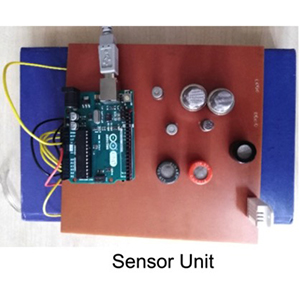 Smart Citations
Smart CitationsSee how this article has been cited at scite.ai
scite shows how a scientific paper has been cited by providing the context of the citation, a classification describing whether it supports, mentions, or contrasts the cited claim, and a label indicating in which section the citation was made.
E-nose: a low-cost fruit ripeness monitoring system
All fruits emit some specific volatile organic compounds (VOCs) during their life cycle. These VOCs have specific characteristics; by using these characteristics fruit ripening stage can be identified with-out destroying the fruit. In this study, an application-specific electron-ic nose device was designed for monitoring fruit ripeness. The proposed electronic nose is cost-efficient and does not require any modern or costly laboratory instruments. Metal oxide semiconductor (MOS) sensors were used for designing the pro-posed electronic nose. These MOS sensors were integrated with a microcontroller board to detect and extract the meaningful fea-tures of VOCs, and an artificial neural network (ANN) algorithm was used for pattern recognition. Measurements were done with apples, bananas, oranges, grapes, and pomegranates. The designed electronic nose proved reliable in classifying fruit samples into three different fruit ripening stages (unripe, ripe, and over-ripe) with high precision and recall. Furthermore, the proposed elec-tronic nose performed uniformly on all three fruit ripening stages with an average accuracy of ≥95%.
How to Cite

This work is licensed under a Creative Commons Attribution-NonCommercial 4.0 International License.
PAGEPress has chosen to apply the Creative Commons Attribution NonCommercial 4.0 International License (CC BY-NC 4.0) to all manuscripts to be published.

 https://doi.org/10.4081/jae.2022.1389
https://doi.org/10.4081/jae.2022.1389





